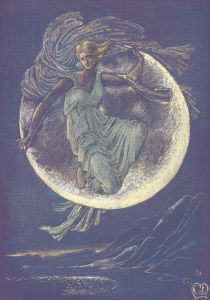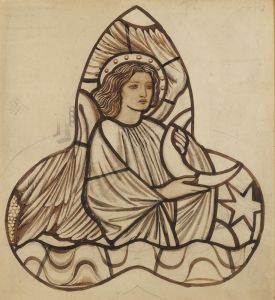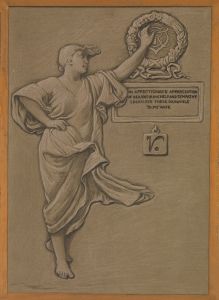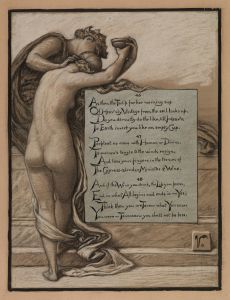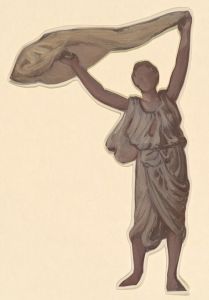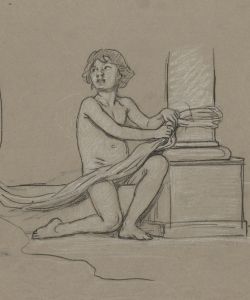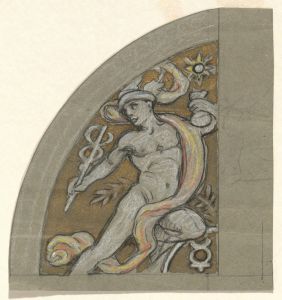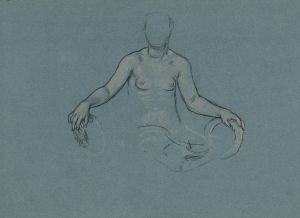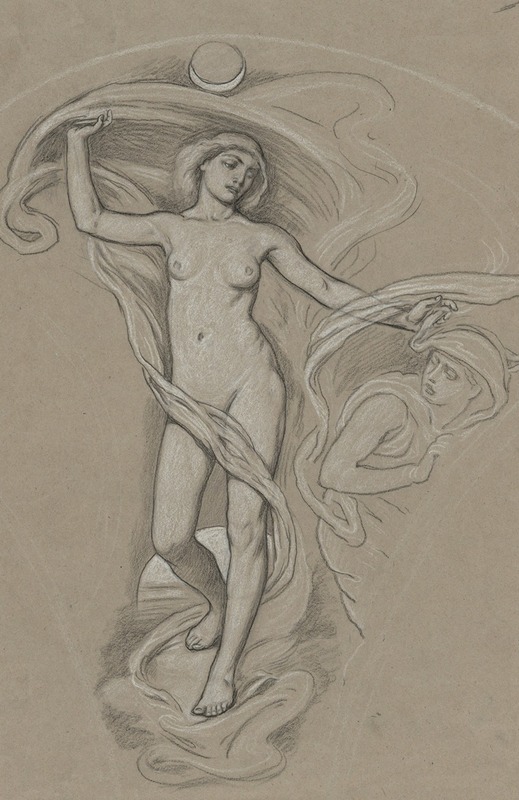
Study for Luna
A hand-painted replica of Elihu Vedder’s masterpiece Study for Luna, meticulously crafted by professional artists to capture the true essence of the original. Each piece is created with museum-quality canvas and rare mineral pigments, carefully painted by experienced artists with delicate brushstrokes and rich, layered colors to perfectly recreate the texture of the original artwork. Unlike machine-printed reproductions, this hand-painted version brings the painting to life, infused with the artist’s emotions and skill in every stroke. Whether for personal collection or home decoration, it instantly elevates the artistic atmosphere of any space.
Elihu Vedder was an American symbolist painter, born on February 26, 1836, in New York City. He is best known for his allegorical and mystical works, which often explore themes of dreams, mythology, and the human condition. Vedder spent a significant portion of his career in Italy, where he was influenced by the Renaissance and classical art, as well as by the burgeoning symbolist movement in Europe.
One of Vedder's notable works is "Study for Luna," a painting that reflects his interest in mythology and the symbolic representation of celestial bodies. While specific details about "Study for Luna" are limited, it is known that Vedder often drew inspiration from classical mythology, and the moon, or "Luna," was a recurring theme in his work. The moon has been a powerful symbol in various cultures, often associated with femininity, mystery, and the passage of time, which aligns with Vedder's thematic interests.
Vedder's style is characterized by a meticulous attention to detail and a penchant for creating dreamlike, otherworldly scenes. His use of color and composition often evokes a sense of mystery and introspection, inviting viewers to delve deeper into the symbolic meanings of his work. In "Study for Luna," it is likely that Vedder employed these techniques to explore the symbolic and mythological significance of the moon.
Throughout his career, Vedder was associated with the American Pre-Raphaelites and the Aesthetic Movement, both of which emphasized beauty and detail in art. His work often reflects a synthesis of these influences, combining the detailed realism of the Pre-Raphaelites with the symbolic and aesthetic concerns of the Aesthetic Movement.
Vedder's contributions to art extend beyond painting; he was also a skilled illustrator and is perhaps best known for his illustrations for the 1884 edition of Edward FitzGerald's translation of "The Rubaiyat of Omar Khayyam." These illustrations further demonstrate his ability to blend narrative and symbolism, a skill that is evident in his paintings as well.
"Study for Luna" fits within Vedder's broader oeuvre, which frequently explores themes of transformation, the passage of time, and the interplay between the earthly and the divine. His work often invites viewers to contemplate the deeper meanings behind the visible world, using mythological and allegorical imagery to bridge the gap between the known and the unknown.
Elihu Vedder passed away on January 29, 1923, in Rome, Italy, leaving behind a legacy of art that continues to be studied and appreciated for its symbolic depth and aesthetic beauty. His works, including "Study for Luna," remain a testament to his skill as an artist and his ability to convey complex themes through visual means.





